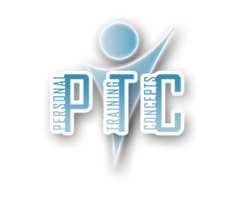REHABILITATION
Don’t wait! Get in touch with PTC Rik + 32 498 399 280 Roeselare – Bruges – Damme – Knokke – Cadzand region
Functional training exercises the entire body in all three dimensional planes. The ankle, the hip and especially the core play an important role. In addition to the daily movements that the person performs in the three-dimensional planes, stability also plays an important role in functional movement/exercise.
This is very important for general rehabilitation: knee surgery, hip surgery, … ligament surgery, back surgery, hernia, … These rehabilitation exercises utilise light weights and resistance with as many stimuli as possible and in as many corners as possible. Recovering joint and posture stability.
Three-dimensional
The essence of the functional training is three-dimensional. By this we mean that we do not focus on training the isolated muscle groups with normal fitness equipment or small fitness equipment. We use large movements during this type of training to give our entire body a workout in one exercise.
What exactly does 3D stand for?
The body is divided into three dimensional planes (Figure 6) in which we move at all times.
The sagittal plane
The frontal plane
The transversal plane
The goal is to work on all three areas. When we overload one plane, this limits our daily movements.
This means that it is important to work on all functional movements and therefore to emphasise exercises that add value to stability, acceleration and movement control.
Under these three training goals, functional movement also takes place at the connection of the kinetic chain and in all three of our movement planes.
This kinetic chain is only a link between the different planes and movements. When one of the connections is broken, problems arise in the execution, effectiveness and speed of movement.
The movement planes
The movement planes serve to control our movements. It is therefore important to remember that an activity is determined by one dominant plane, but then the other two planes must be stable to perform the activity in an efficient manner.
The sagittal plane divides our body into a left and a right half.
As a result, we move in a forward, backward, upward and downward direction. Examples are walking, stepping, bicep curls, leg curls, … This plane is mainly trained during classical training sessions. This is not an effective training technique if the other planes are ignored during complete training.
The frontal plane divides our body into a front and a back. The main movements performed are the abduction and the adduction, where we execute the movement away from the middle line and towards the middle line. Examples include hip abduction and hip adduction.
Secondary functions that are no less important, where we mainly work in the frontal plane, are stability, strength, flexibility and balance.
With the transversal plane we speak about the upper and lower half of our body.
The dominant movements we practice in this plane are the daily twisting activities.
Do sessions have to take place in the Fitness Club? Not at all! I can also provide functional training with you on the tennis court, football field, …, at work or at home, at the seaside, in a forest, … why not give me a call?
PTC Personal Training Rik Termote Roeselare gsm: +32 498 399 280
Roeselare – Bruges – Knokke – Kortrijk – Oostende Region










